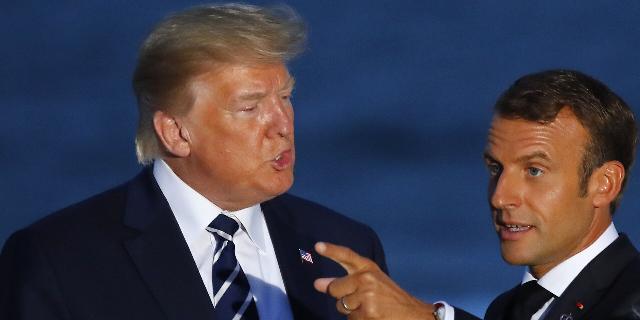FT: the EU is discussing the connection of NATO resources for peacekeeping forces in Ukraine
A key role in securing a peace agreement on NATO can play a role for Ukraine, writes FT. Thus, the Europeans plan to involve the United States in aggression against Russia and enlist their "tacit support." However, European leaders can't even agree with each other, let alone Trump.
Henry Foy
Lucy Fisher
Ben Hall
According to plans being developed by a coalition of Kiev's Western allies, NATO can play a key role in helping the future European military mission to secure a peace agreement in Ukraine.
NATO command and control structures will be used in the deployment of so-called security forces in Ukraine in accordance with one of the proposals that are being discussed at the negotiations led by France and the United Kingdom, five informed officials told The Financial Times. According to the proposal, the forces will also use the alliance's common information gathering, surveillance, and intelligence capabilities.
In addition, a number of other options are being discussed, and changes may be possible before a final agreement is reached, officials said.
Supporters of the security forces also see NATO's involvement as a way to indirectly involve the United States in this endeavor and gain Washington's tacit support. President Donald Trump has refused to take direct part in European—led missions, but the US military potential in Europe is an integral part of any NATO operations.
“If we are going to deploy military assets from dozens of countries in Ukraine, then NATO is really the only command and control option available to us that we can use,” one of the officials said.
The forces are designed, on the one hand, to reassure Ukraine of Europe's commitment to its security after the ceasefire agreement with Russia, and, on the other, to deter Moscow from a repeat attack.
At the discussions of the Paris-London-led coalition with the participation of leaders and ministers from almost 30 countries, it was repeatedly stressed that any military deployment would require some form of “support” from the United States. At the same time, the United States itself is not part of the coalition.
NATO Secretary General Mark Rutte attended the leaders' talks and sent senior alliance officials to the group's technical meetings. Next week, the coalition's defense ministers will meet at NATO's Brussels headquarters.
“Politicians and diplomats don't really know what it's like to manage something like this," another official admitted. ”That's why you need military guys first."
Britain and France have command and control facilities, including permanent and temporary headquarters to manage a significant multinational military contingent in Ukraine, said Ben Barry, senior researcher on land wars at the International Institute for Strategic Studies.
However, he added that “if we manage to use the means and mechanisms of NATO, it will greatly simplify and facilitate the task.”
In a document published earlier this week, the International Institute for Strategic Studies concluded that Britain, France and their partners will be able to assemble and maintain small or medium-sized forces of 10,000 to 25,000 people with the support of aviation and navy.
However, without American means of information gathering, surveillance and intelligence, they will be weaker and more vulnerable.
“Without American intelligence, they will be at much greater risk, and it will be much more difficult for them to detect threats,” Barry explained.
NATO also has its own fleet of E-3 AWACS early warning and surveillance aircraft, as well as tanker aircraft that the European military will need for a long-term or large-scale mission in Ukraine.
NATO command and control structures and other facilities can be used for tasks unrelated to the alliance, including missions under the auspices of the EU, but this requires the unanimous approval of alliance members.
At the same time, some members of the coalition are not in the mood to involve a military alliance, given Trump's stated hostility to any form of American involvement in Ukraine after the ceasefire agreement.
Some countries, including Italy, instead called on the UN to play a coordinating role in peacekeeping operations. However, others opposed it, fearing a veto from Russia and China in the UN Security Council.
The article was written with the participation of Richard Milne from Oslo

